Japan consists of roughly four vegetation zones that are delineated by temperature and precipitation: the alpine region, subalpine region, summer-green broad-leaved forest region and the evergreen broad-leaved forest region.
Due to its substantial length of over 3000 km from north to south and its mountain ranges that can exceed 3000 meters, Japan’s vegetation varies by latitude and by altitude. Evergreen forests tend to appear in the southern half of the Japanese mainland, with broad leaf forests, subalpine and alpine appearing with increasing frequency to the north and near mountains.
There are over 2000 species of trees and shrubs that are exclusively native to Japan. Some of which are commonly found in cultivation in Africa, Europe, North America and South America. In this article, find information on common Japanese trees you can consider for landscaping your yard or garden.
Japanese Trees or Trees Native To Japan
Japanese Maple
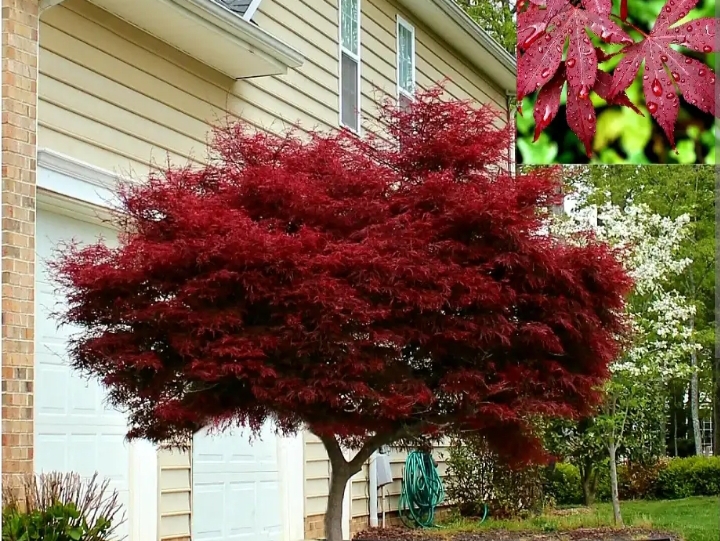
Japanese maple is deciduous shrub or a small tree reaching heights of between 20-30 feet with a mature width of 10-15 feet. It is often grown as an understory plant in shady woodlands. In habit, its canopy often takes on a dome-like shape, especially when mature. It may also have multiple trunks joining close to the ground.
The flowers are produced in small cymes, the individual flowers with red or purple sepals and whitish sepals. The foliage offers striking color throughout the growing season, becoming even more beautiful with the fall color change. Many different cultivars of this maple have been selected and they are grown all over the world for their attractive forms and spectacular colors.
Japanese Zelkova

Japanese Zelkova is a medium-sized tree usually growing to 20 m (60ft) tall. It is characterized by a short trunk dividing into many upright and erect spreading stems forming a broad, round-topped head. The tree grows rapidly when young though the growth rate slows to medium upon middle age and maturity.
The leaves are green to dark green in spring and throughout the summer, changing to yellows, oranges and reds in autumn. The twigs are slender with small, dark conical buds in a zigzag pattern. The branches are usually glabrous. The bark is grayish white to grayish brown and either smooth with lenticels or exfoliating in patches to reveal orange inner bark. The branchlets are brownish-purple to brown.
Japanese Cedar
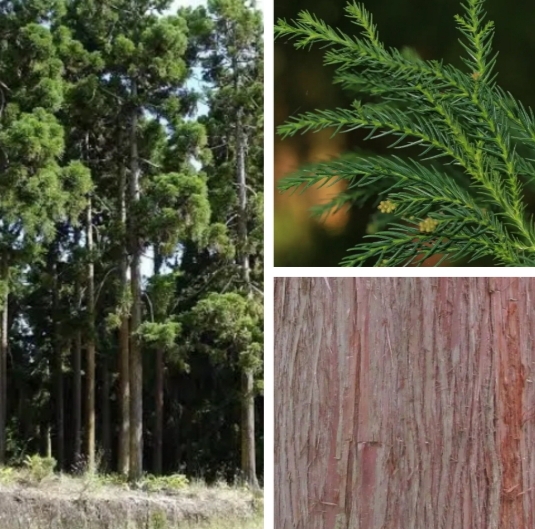
Japanese cedar is an evergreen needled tree endemic to Japan, where it is also referred to as Sugi. The tree can grow between 60-100 feet tall at maturity. When young, the tree grows in an attractive pyramid shape, but as it grows older, its crown opens further in a narrow oval shape. Its shiny needles are in the shade of blue-green, arranged in spiral pointing towards the tip of the stems, like foxtails.
Japanese cedar creates an all-season interest not only as an evergreen but also with its exciting shape, cones, exfoliating coral red bark and tendency to form multiple arrow-straight trunks. The tree is commonly used in eastern Asia for reforestation and for garden and avenue plantings. Its reddish wood is used to build ships, houses, furniture and vats as well for ornamental carvings.
Ginkgo Biloba
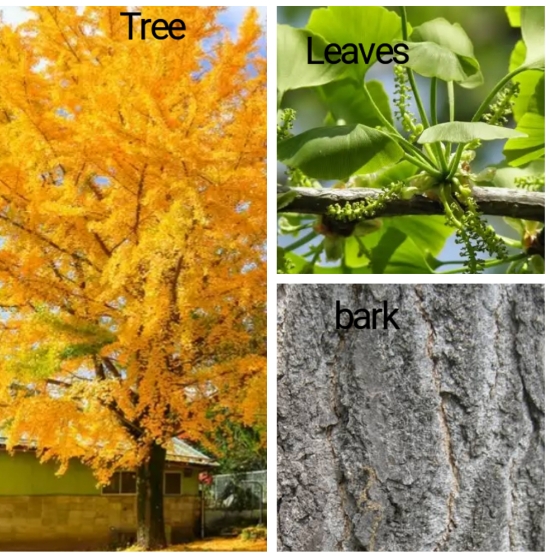
Ginkgo biloba commonly referred to as ginkgo or maidenhair tree is species of tree native to China and Japan. The tree has an angular crown and long erratic branches and is usually deep-rooted and resistant to wind and snow damage. The tree normally reaches heights of between 60-100 feet tall with some specimens reaching around 165 feet. Young trees are often tall and slender and sparsely branched; the crown becomes broader as the tree ages.
The distinctive fan-shaped Ginkgo tree leaves flutter in the slightest breeze and turn golden or bright yellow before carpeting the ground once fall arrives. The fissured bark is grayish, deeply furrowed on older trees and has a corky texture. Ginkgo tree takes about 20 years for the tree to mature enough and to be distinguishable in terms of sex (female and male).
Japanese Evergreen Oak
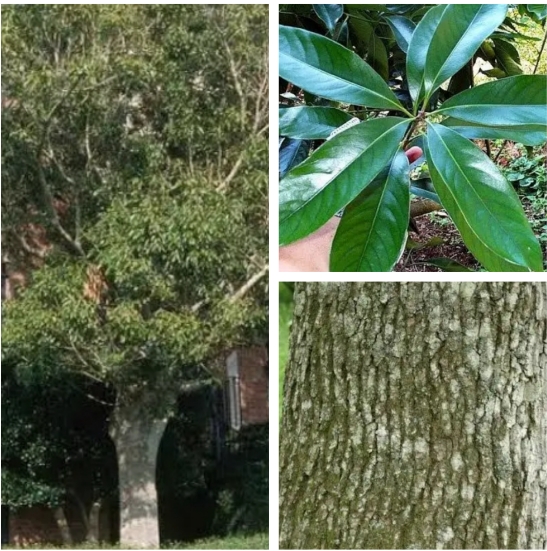
Japanese Evergreen Oak is usually bushy and densely domed, reaching a height of between 20-45 feet. The bark is smooth and dark grey. Leaves are dark and glossy above and yellowish beneath. They narrow to a long, finely-rounded tip.
The inconspicuous flowers are followed by brown, cupped acorns. The dense growth and small size make Japanese evergreen oak idea for use as a specimen, screen or small shade tree. This tree demonstrates excellent tolerance to heat and drought.
Japanese Black pine
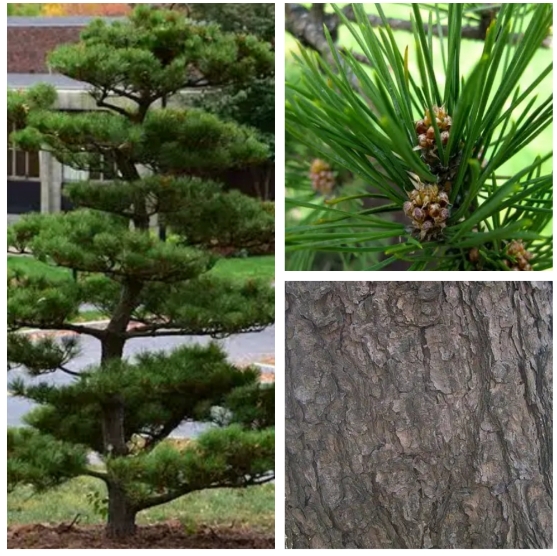
The Japanese black pine is an evergreen conifer tree that grows 20-60 feet tall and 12 to 20 feet wide. This tree is native to Japan and may occur in groves, along the seacoast or on rocky cliffs. It has a flat-topped pyramidal form with no prominent central leader. As it ages, it will be irregular and asymmetrical with a spreading crown with pendulous branches.
The has a shrubby habit and curved trunk. The bark is gray on young trees and small branches, changing to black and plated on larger branches and the trunk; becoming quite thick on older trunks. In Japan it is widely used as a garden tree both trained as Niwaki and untrained growing as an overstory tree.
Japanese tree lilac
The Japanese tree lilac grows to heights of approximately 40 feet tall and 12 feet. It has a moderate growth rate, an upright growing habit and a rounded shape. It also produces large clusters of small creamy-white, fragrant flowers that are 6-12 inches long. The tree lilac has reddish-brown, cherry-like bark with elongated lenticels that give it year-round interest.
Japanese tree lilac exhibits dark green simple leaves in pairs on stems that are ovate with a rounded base. This tree blooms at a time when most spring-bloomers are through for the year and summer-bloomers are still budding, thus filling in a gap when few other trees and shrubs are in flower.
Oyama magnolia
Oyama Magnolia is a vase-shaped, somewhat coarse-textured shrub or small tree that is native to understory forested areas in Japan and Korea. This spreading deciduous tree-shrub grows 15-20 feet tall and blooms in late spring to late summer, with white fragrant blossoms.
Flowers are followed by showy pink oval fruits which split open in fall to reveal orange to red seeds. In autumn, the oblong leaves turn gold before they fall. This magnolia is a good choice for small gardens where it will make a charming statement growing as a central feature.
Kwanzan Cherry
The Kwanzan cherry tree is one of the most flamboyant and famous Japanese flowering cherry tree varieties. It’s a favorite choice of many avid plant enthusiasts because of its exquisite flowers that grow in large clusters of 3 and 5. The flowers are ‘double-pink’ and appear as blossoms that cover the tree from as early as April and stay through the spring.
The tree is a fast-growing deciduous tree and will reach a height of up to 25 feet on maturity. Not only are they stunning in the spring, but they lend beautiful fall color and the trees are sterile, so they do not produce fruit, making them the perfect specimens along roadways and sidewalks.
Yoshino cherry
The Yoshino cherry also referred to as the Japanese flowering cherry is a wonderful plant with white-pink flowers that appear in early spring. It is generally regarded as one of the most popular ornamental cherry trees in the world today. This tree has a lovely shape that is symmetrical, spreading and generally rounded.
The bark is smooth and gray and as it matures has interesting lines that break up the even surface. Native to Japan, the Yoshino cherry is known to be among the earliest cherry trees to blossom, and also has other interesting features such as a graceful branching pattern, glossy bark and dark green leaves which color well in the fall.
Japanese yew
Japanese yew also referred to as spreading yew, is an ornamental evergreen shrub or small tree of yew family native to Japan and widely cultivated in North America for decorative purposes. This yew is notable for its spiny, dark-green evergreen needles, which are about 2 inches long. Its leaves often are tinged yellow on the underside.
Its bark is red-brown and scaly, and in the winter its foliage may turn a similar red-brown color. Japanese yew grows 20-40 feet tall, though it can reach 50 feet in the right conditions in cultivation, however, it is usually much smaller. It resembles the English yew but is hardier and fast growing. The tree can be a good foundation or accent plants and their dark green needles are a good background for colorful shrubs and perennials.
Japanese plum tree
The Japanese plum tree also referred to as Loquat tree is generally a small tree or large evergreen shrubs. The tree usually has short trunks, rounded crowns and woolly twigs. The tree can grow up to 10 meters (33 feet). The leaves of this tree are tough, dark green with a leathery texture and serrated margins. Japanese use the leaves of these trees for making tea (biwa cha).
Most gardeners in North America grow Japanese plum trees for their yellow or orange colored delicious fruits. The flavor of these fruits is almost like a combination of peach and apricot. The fruits ripen any time between spring and summer, depending on the climate and temperature.
Japanese cypress/Hinoki
The Hinoki cypress is a tall evergreen coniferous tree with spreading horizontal branches that droop at the tips. Depending with the growing condition and climate, the tree can reach between 50-80 feet. The bark is dark red-brown in color. This tree has a slow to medium growth rate at about 12 inches per year (some cultivars grow much more slowly). It is typically planted in fall or early spring.
Hinoki is widely cultivated in the temperate northern hemisphere for its high-quality timber and ornamental qualities, which many cultivars commercially available. The wood is lemon-scented, light pinkish-brown with a rich straight grain and is highly rot resistant.
Japanese Larch
Japanese larch is a vigorous deciduous conifer adorned with a round, straight trunk and long horizontally spreading branches and slender pendulous branchlets. The crown is conical, dense, becoming irregular and more open with age. It commonly reaches 20-40 m tall with a diameter of 2 meters and grows for up to 100 years plus. Fast-growing and very hardy, Japanese larch makes a wonderful specimen in a large landscape. It is adaptable to wet areas, tolerates clay soils and is disease-resistant.
Unlike most corn-bearing trees, the Japanese larch loses its foliage each winter. Among the earliest trees to come into leaf in spring, its gray or blue-green needles turn bright yellow before being shed in the fall. The wood is tough and durable and is used for general construction work. Small larch poles are widely used for fencing.
Japanese Elm
The Japanese elm is one of the larger and more graceful Asiatic elms endemic to much of continental northeast Asia and Japan where it grows in swamp forest on young alluvial soils. The tree can mature to 55 feet tall with a 15-feet spread. The bark is grayish-brown and the crown of the tree is rounded and spreads out in an umbrella shape. The fruits of Japanese elm trees depend on the genera and variety of the tree. Some are samaras and some are nuts.
Japanese elm has a strong and flexible wood which can be used in variety of ways including making curved furniture, technical parts, veneer, plywood and lots of other useful technical and business articles.
Japanese Wisteria
Wisteria floribunda common name Japanese wisteria is a tropical tree-like climbing vine that can grow up to 40 feet with a trunk diameter of up to 15 inches while producing flower cascades. It climbs by twining clockwise (from left to right around the axis). It is native to Japan where it is known to grace arbors and trellises all over the country.
Its springtime cascading flower cluster can grow to 3 feet long or more in some cultivars. Blooms typically open first at the base and last at the tip of each cluster. The flowers are pale lavender or white in color, slightly fragrant and bloom as the foliage expands.
Japanese Pagoda Tree
Japanese pagoda tree is a deciduous tree that grows quickly into a 20-60 feet tree with a broad, rounded crown. Japanese pagoda tree is native to both Korea and Japan where it is commonly found on the grounds of Buddhist temples.
The leaves of the Japanese pagoda tree are especially attractive. They are a bright, happy shade of green and reminiscent of a fern leaf since each is composed of a grouping of some 10 to 15 leaflets. The foliage on this deciduous tree turns a brilliant yellow in autumn.
The plant is important in traditional medicine, and its leaves and flowers are edible. The wood is useful in construction and the tree is cultivated as both a shade tree and an ornamental in many places.
Japanese Thuja
Japanese thuja is a species of thuja, an evergreen coniferous tree. It is native to southern japan, where it occurs on islands of Honshu and Shikoku. It is a medium-sized tree, reaching 65-100 feet tall and with a trunk diameter of 18 inches, measured at breast height. The crown is pyramidal with ascending or spreading branches and drooping foliage. Bark is reddish brown and fibrous. The sprays of foliage are flattened and rounded with the ultimate branchlets alternately arranged.